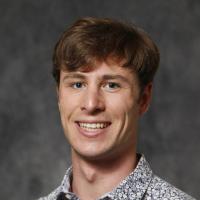CRB Trainee Spotlight: Julia Warrick (Kearse lab)
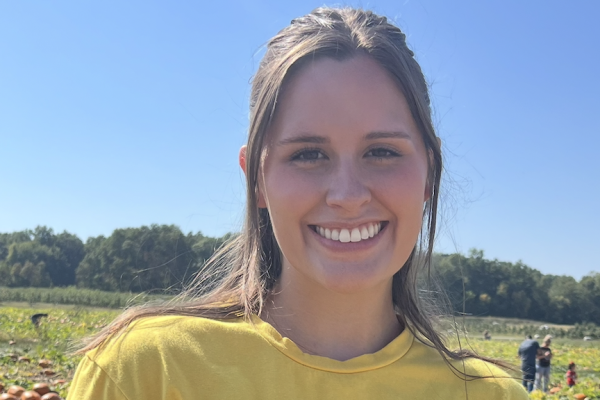
Julia Warrick, a 2024 CRB fellow, has just begun her 5th year in the Kearse lab, but the end of her PhD looms large. Read on to learn about her work with the unique topoisomerase TOP3B, her experiences at OSU, and her future plans.
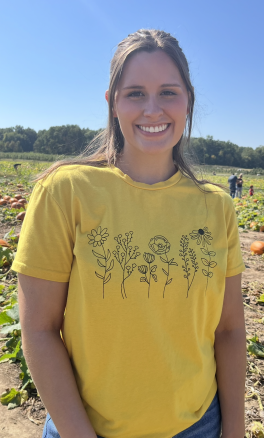
Born in Alabama and raised in Tennessee, Julia had already envisioned a future in science at a young age. Enthralled by mystery and crime shows on TV, she considered a degree in forensic anthropology. However, when she attended Maryville College, a small school on the outskirts of the Smoky Mountains, her interests shifted to the broader world of biology. Julia mentioned that Maryville students interested in an advanced degree would usually end up at the nearby University of Tennessee, but she felt ready to leave the mountains for a new environment. Julia was excited by the interdisciplinary nature of the Biomedical Sciences Graduate Program (BSGP) at OSU and soon found her home in the Kearse lab.
Julia’s work focuses on the topoisomerase (TOP) 3B. Topoisomerases are commonly known to untangle double-stranded DNA topology during replication and translation, where long, intertwined sequences can reduce the efficiency of these processes. However, TOP3B does not bind to double-stranded nucleic acids. Instead, it is part of a unique subtype of topoisomerases that bind to single-stranded DNA. Surprisingly, unlike other TOP proteins, TOP3B contains an RNA binding domain. In early studies of TOP3B, it was also reported to localize to the cytoplasm and sediment with translating ribosomes. Together, these properties convinced many researchers that a major role of TOP3B is to unwind and stabilize mRNA, not DNA. Though a handful of groups have since reported the topoisomerase activity of TOP3B on mRNA, they also showed TOP3B is a canonical RNA binding protein. As a result, it is unclear how the discrete catalytic activity of TOP3B impacts cellular processes.
To probe the TOP3B catalytic cycle, Julia turned to de novo mutations linked to human neurodevelopmental disorders. While the pathological mechanisms of these mutant proteins are unknown, the Kearse lab suspected they would find a defect in mRNA transcripts bound by TOP3B. To distinguish between RNA binding and catalytic activity of TOP3B, Julia developed an assay that probed for covalent intermediates generated during the characteristic topoisomerase reaction. Under denaturing conditions, Julia found that any non-covalently linked RNA:TOP3B complexes would dissociate, allowing her to differentiate between transient binding and true catalytic interactions.
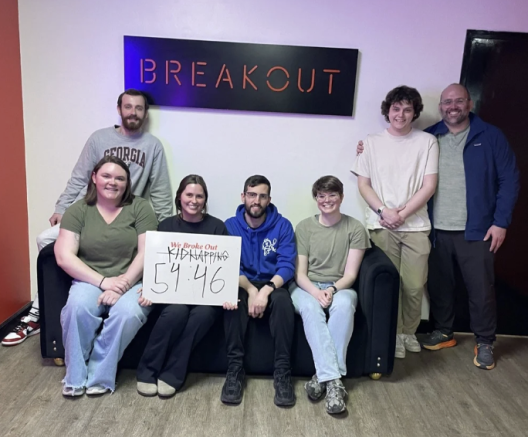
Julia observed that in cells with human TOP3B mutants, the level of unresolved covalent intermediates was much greater than in cells with WT TOP3B. As a case study, she selected the mutation C666R and found it interfered with Zn2+binding in a zinc-finger domain, leading to the failure of TOP3B to resolve these intermediates. Julia also tested her mutant TOP3B constructs in rat neurons, which also generated unresolved intermediates and led to reduced survival rates. These novel findings revealed a partial mechanism for neurodevelopmental disorders caused by TOP3B and defined the importance of the zinc-finger domain in catalysis. Julia’s work was (very recently!) published in Nucleic Acids Research, marking a major milestone in her PhD career.
Now that Julia has completed her first-author paper, she is taking time to reflect on her journey in the Kearse lab. She recalled that “The vibes were always good when I was rotating…I wanted somewhere I knew I would be supported when things inevitably went wrong”. Julia reminisced on the long hours spent optimizing the covalent-intermediate assay, growing more frustrated as each trial failed to yield the desired RNA:protein complexes. Even through what seemed like unending failures, Mike was always a guiding light, and she stubbornly continued to improve her method. Almost 8 months after starting, Julia finally saw the bands for the TOP3B complexes on her blot, a day she said she’d never forget.
When Julia first started her thesis work, she was surrounded by several senior graduate students. They welcomed her with open arms, and in tandem with Mike’s guidance, Julia had a strong support system throughout her graduate career. Now, Julia is the most senior student in her lab. She said it feels strange to occupy the role once held by her own mentors. Others readily turn to her for experimental advice, emotional support, and tips on PhD life. Somehow, the last 5 years of hard work are blurred together into a single complicated memory. In many ways, Julia says, it feels like not much has changed, just that she has more responsibilities. But really, she wondered, did she change? Was she ready to graduate?
PhD journeys are funny in this way. In my experience, the end sneaks up on you. Graduation is an inevitable reality, and the answer of when it should happen is always a bit arbitrary. Your brain will try to justify why you might be worthy of a degree- it sifts through the minutiae of each day, each experiment, each research presentation like a prospector panning for gold. You remember the best bits and save them for later. You condense them into a thesis; you receive a PhD. But the journey isn’t over, is it? Mountains of silt have passed through your pan. Are you truly ready to move on?
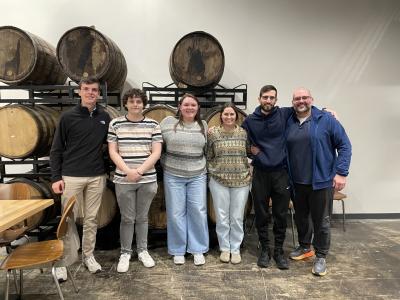
Regardless of what is next, Julia has built a strong foundation for her future self. Her knowledge and passion about her research were evident throughout our conversation, indicative of an experienced scientist. Though the process of graduating feels overwhelming, the completion of her main project marked a distinct shift in Julia’s goals. She is proactively applying to industry scientist and science writing positions and is excited to start building her post-graduate career. In addition, when she is not writing her dissertation, Julia can be found “essentially being a grandma”, reading fantasy books and learning how to crochet. She is also a proud caretaker of an army of plants, and hikes whenever she gets the chance. She hopes her project will be continued by others after she leaves Mike’s lab so that the ultimate goal of her research—developing gene therapies for patients with TOP3B mutations—can one day be realized.

